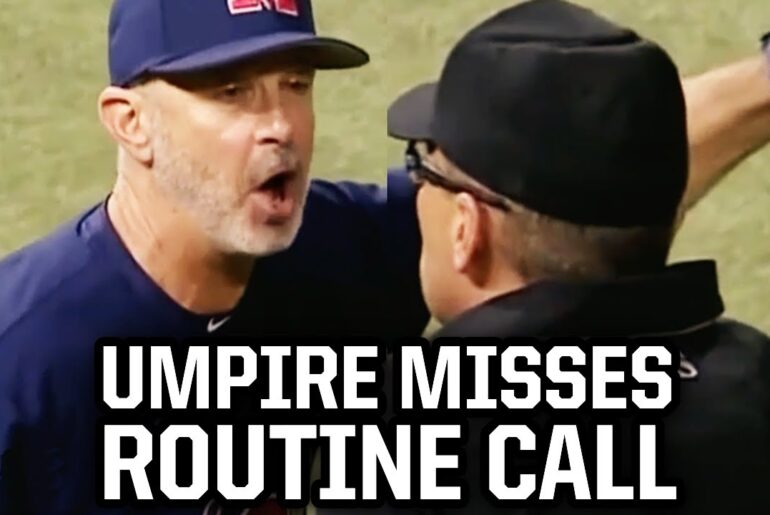In the world of baseball, certain rules can be quite complex and open to interpretation. One such rule that often sparks controversy and confusion is the “Blocking the Plate” rule. In this article, we will delve into the details of this rule and attempt to understand the rationale behind the umpires’ decisions. We will analyze a specific play and break down the rule’s various interpretations to shed light on the intricacies involved.
Setting the Stage
The game is tense, and the stakes are high. It’s the eighth inning, and the score is tied. A pivotal moment arises when a runner on second base attempts to score on a hit to left field. The catcher receives the throw and blocks the plate, resulting in an intense play at home. However, the umpire’s decision and subsequent review leave fans and players bewildered.
Rule Interpretation: Possession of the Ball and Legitimate Attempt to Field
To understand the umpire’s ruling, we must examine the “Blocking the Plate” rule itself. According to the rule, a catcher should not be deemed to have violated the rule if two conditions are met:
1. The catcher has not blocked the plate without possession of the ball.
2. The catcher is in a legitimate attempt to field the throw.
In the play under review, the catcher initially sets up off the plate, allowing the runner an outside lane. However, due to the batter’s obstructing presence, the catcher adjusts his position to make a play on the ball. This raises the question: Did the catcher have a legitimate need to shift and make the catch? Most viewers would argue that the answer is yes. Although the catcher’s foot lands on the plate during this movement, it is crucial to determine if he was required to be perfectly off the plate or if his adjustment to field the ball was permissible.
Impeding the Runner’s Progress
Another aspect of the “Blocking the Plate” rule involves impeding or hindering the runner’s progress. The rule states that a catcher shall not be deemed to have hindered or impeded the runner’s progress if, in the umpire’s judgment, the runner would have been called out regardless of the catcher blocking the plate.
In the reviewed play, the umpire evaluates whether the runner was forced to alter their course due to the catcher’s movement. If the runner had to change their path at the last moment and dive inside, impeding their natural running lane, then the question arises: Would the runner have been safe if they had stayed in their intended lane? This subjective judgment is the crux of the umpire’s decision.
The Umpire’s Decision and its Fallout
After careful review, the umpires overturn the initial call and rule that the catcher did indeed block the plate. This decision results in the tying run being scored, causing uproar among the opposing team and their manager. The manager, livid with the ruling, confronts the umpires and is subsequently ejected from the game.
Seeking Clarity
In the aftermath of the disputed play, questions linger. The catcher approaches home plate seeking an explanation for his perceived mistake. The manager promises to discuss the matter further the next day, hoping for some clarity. It becomes evident that the interpretations of the “Blocking the Plate” rule can be subjective, leaving room for debate and confusion.
A Turn of Events
In the subsequent game, a dramatic turn of events unfolds. With two outs, two runners on base, and a two-run lead, the catcher steps up to the plate. In a remarkable display of skill, he connects with an inside fastball, sending it over the fence for a home run. However, he requests a review of the play, unsure if the ball had truly cleared the fence. This unexpected move surprises his teammates and adds a touch of mischief to the game.
Conclusion
The “Blocking the Plate” rule in baseball remains a topic of contention and confusion. Despite efforts to decipher the umpires’ thought process, disagreements persist. The rule’s intricate details, such as possession of the ball, legitimate attempts to field, and impeding the runner’s progress, make it a challenging rule to interpret consistently. While fans and players may not always agree with the decisions made, the rule’s complexities continue to fuel debates and add an element of unpredictability to the game.



